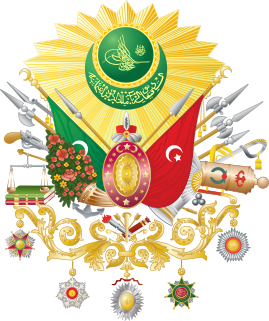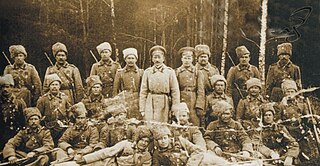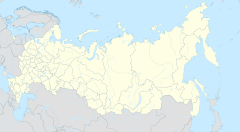
The Central Powers, also known as the Central Empires, was one of the two main coalitions that fought World War I (1914–18). It consisted of Germany, Austria-Hungary, the Ottoman Empire and Bulgaria; hence it is also known as the Quadruple Alliance. Colonies of these countries also fought on the Central Powers' side such as the Micronesia and German East Africa, until almost all of their colonies were occupied by Allies.

The Czechoslovak Legion were volunteer armed forces composed predominantly of Czechs and Slovaks fighting on the side of the Entente powers during World War I. Their goal was to win the support of the Allied Powers for the independence of Bohemia and Moravia from the Austrian Empire and of Slovak territories from the Kingdom of Hungary, which were then part of the Austro-Hungarian Empire. With the help of émigré intellectuals and politicians such as the Czech Tomáš Garrigue Masaryk and the Slovak Milan Rastislav Štefánik, they grew into a force of over 100,000 strong.

The Eastern Front or Eastern Theater of World War I was a theater of operations that encompassed at its greatest extent the entire frontier between the Russian Empire and Romania on one side and the Austro-Hungarian Empire, Bulgaria, the Ottoman Empire and the German Empire on the other. It stretched from the Baltic Sea in the north to the Black Sea in the south, involved most of Eastern Europe, and stretched deep into Central Europe as well. The term contrasts with "Western Front", which was being fought in Belgium and France.

The Bosnian Crisis, also known as the Annexation Crisis or the First Balkan Crisis, erupted on 5 October 1908 when Austria-Hungary announced the annexation of Bosnia and Herzegovina, territories formerly within the sovereignty of the Ottoman Empire but under Austro-Hungarian administration since 1878.

Camps for Russian prisoners and internees in Poland that existed during 1919–1924 housed two main categories of detainees: the personnel of the Imperial Russian Army and civilians, captured by Germany during World War I and left on Polish territory after the end of the war; and the Soviet military personnel captured during the Polish–Soviet War, the vast majority of them captured as a result of the battles of 1920. Locations of the camps included Strzałkowo, Pikulice, Wadowice, and Tuchola.
A separate peace is a nation's agreement to cease military hostilities with another even though the former country had previously entered into a military alliance with other states that remain at war with the latter country. For example, at the start of the First World War, Russia was a member, like the United Kingdom and France, of the Triple Entente, which went to war with the Central Powers formed by Germany, Austria-Hungary, the Ottoman Empire, and Bulgaria. After the fall of Russian Tsar Nicholas II and the rise to power of the Bolsheviks, Russia defaulted on its commitments to the Triple Entente by signing a separate peace with Germany and its allies in 1917. This armistice was followed on 3 March 1918 by the formal signing of the Treaty of Brest-Litovsk.

The Allies of World War I or Entente Powers were a coalition of countries led by France, Britain, Russia, Italy, Japan and the United States against the Central Powers of Germany, Austria-Hungary, the Ottoman Empire, Bulgaria and their colonies during the First World War (1914–1918).

Sretensk is a town and the administrative center of Sretensky District in Zabaykalsky Krai, Russia, located on the right bank of the Shilka River, 385 kilometers (239 mi) east of Chita, the administrative center of the krai. Population: 6,850 (2010 Census); 8,192 (2002 Census); 10,445 (1989 Census).

The Ukrainian Austrian internment was part of the confinement of enemy aliens in Austria during World War I. Central Camp Talerhof was a concentration camp operated by the Austro-Hungarian imperial government between 1914 and 1917 in the Austrian state of Styria.

Thalerhof was a concentration camp created by the Austro-Hungarian authorities active from 1914 to 1917, in a valley in foothills of the Alps, near Graz, the main city of the province of Styria.

The Military Merit Cross was a decoration of the Empire of Austria and, after the establishment of the Dual Monarchy in 1867, the Empire of Austria-Hungary. It was first established on October 22, 1849 and underwent several revisions to its design and award criteria over the years of its existence. It became obsolete in 1918 with the dissolution of the Austro-Hungarian Empire.
Polish I Corps in Russia was a military formation formed on 24 July 1917 in Minsk from Polish and Lithuanian personnel serving in the Western and Northern Fronts of the Russian Army.

Baron Samu Hazai was a Hungarian military officer and politician of Jewish origin, who served as Minister of Defence of Hungary between 1910 and 1917.

The Austro-Hungarian occupation of Serbia was a military occupation of Serbia by the Austro-Hungarian Armed Forces that lasted from late 1915 until the end of World War I.

The Tuchola prisoner of war camp, located in the town of Tuchola, was built and operated by the German Empire from 1914 until 1918 and then by the Second Polish Republic from 1920 until 1921.

The Ottoman Empire came into World War I as one of the Central Powers. The Ottoman Empire entered the war by carrying out a surprise attack on Russia's Black Sea coast on 29 October 1914, with Russia responding by declaring war on 5 November 1914. Ottoman forces fought the Entente in the Balkans and the Middle Eastern theatre of World War I. The Ottoman Empire's defeat in the war in 1918 was crucial in the eventual dissolution of the empire in 1922.
The diplomatic history of World War I covers the non-military interactions among the major players during World War I. For the domestic histories of participants see home front during World War I. For a longer-term perspective see international relations of the Great Powers (1814–1919) and causes of World War I. For the following (post-war) era see international relations (1919–1939). The major "Allies" grouping included the British Empire, France, Russia, Italy and the United States. Opposing the Allies, the major Central Powers included Germany, Austria-Hungary, the Ottoman Empire (Turkey) and Bulgaria. Other countries and their colonies also became involved. For a detailed chronology see timeline of World War I.
Sliven was a prisoner-of-war camp established in Sliven in 1915 with the intent of housing Serbian troops captured during the course of World War I. Over time Greek and Serbian civilians joined their ranks reaching 19,000 at its peak. From 1916 until its dissolution in 1918 then camp served as a punitive institution. Internees suffered from the lack of proper housing conditions, typhus, malnutrition and ill treatment from their guards. This led to the deaths of over 6,000 prisoners.

The Chita Operations were a series of military engagements fought in the Russian Civil War. On 10 April 1920, the army of the Far Eastern Republic (FER) launched the first operation, aiming at destroying the White Movement's Chita holdup in east Transbaikal which prevented it from connecting with its allies in Primorsky Krai. The first operation ended three days later, a second offensive likewise failed to achieve its final objectives. Fighting continued, however neither side could boast significant territorial gains. On 15 July, the FER signed the Gongota Agreement of 1920 with Japan, the latter's withdrawal from Transbaikal severely weakened the Whites. The FER army was restructured and reinforced by its new commander Genrich Eiche, while morale under Grigory Semyonov's White units plummeted. On 1 October, Eiche launched the final Chita operation, by the end of the month the area of the Chita holdup had been subjugated.

The British colony of Hong Kong saw no military action during World War I (1914–1918). The biggest external threat to the colony was perceived to be the German East Asia Squadron, but the squadron was eliminated in December 1914. Nonetheless, the city served as an important port in East Asia, including as the headquarters of the British China Station, and saw significant socioeconomical changes during the war.

















